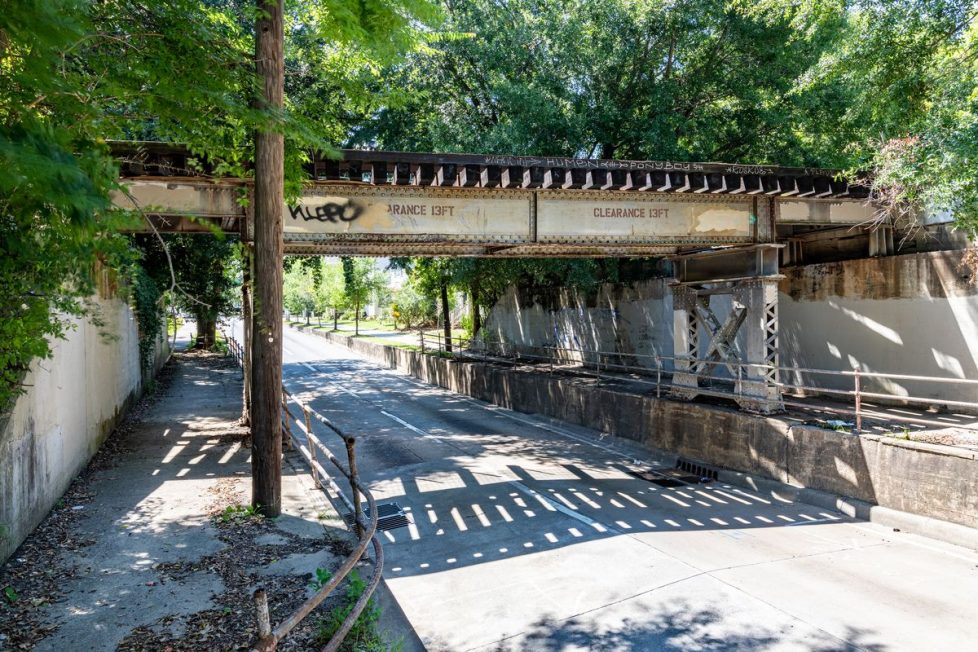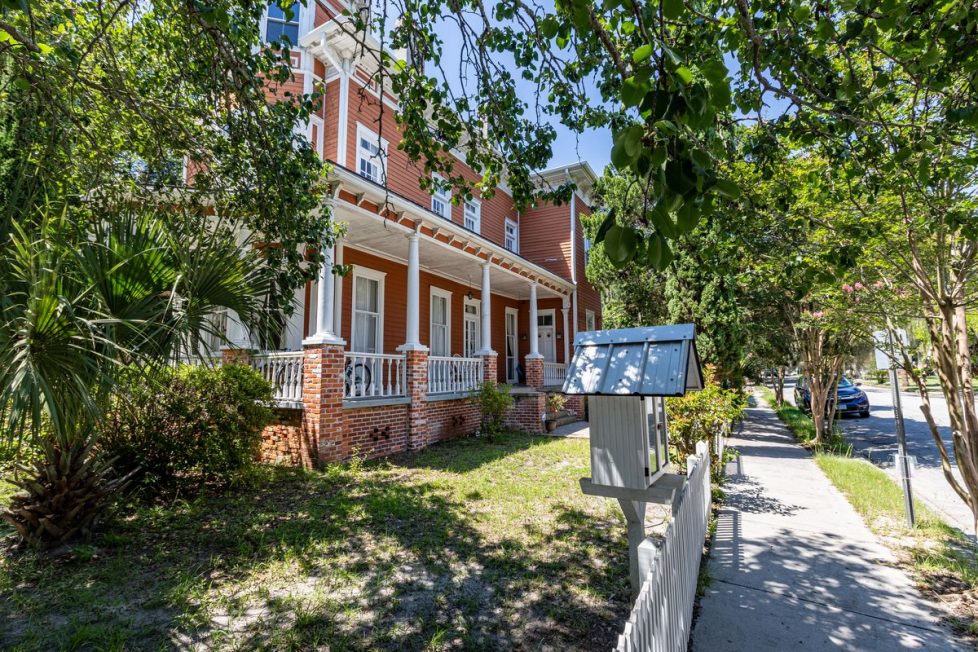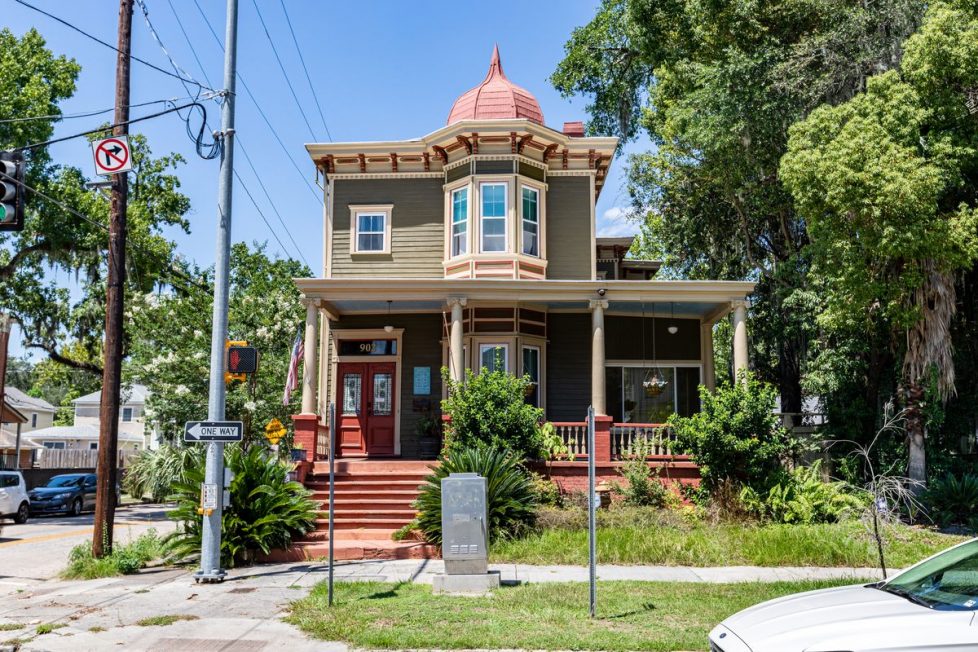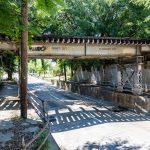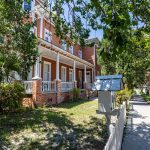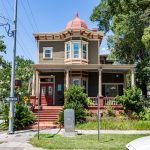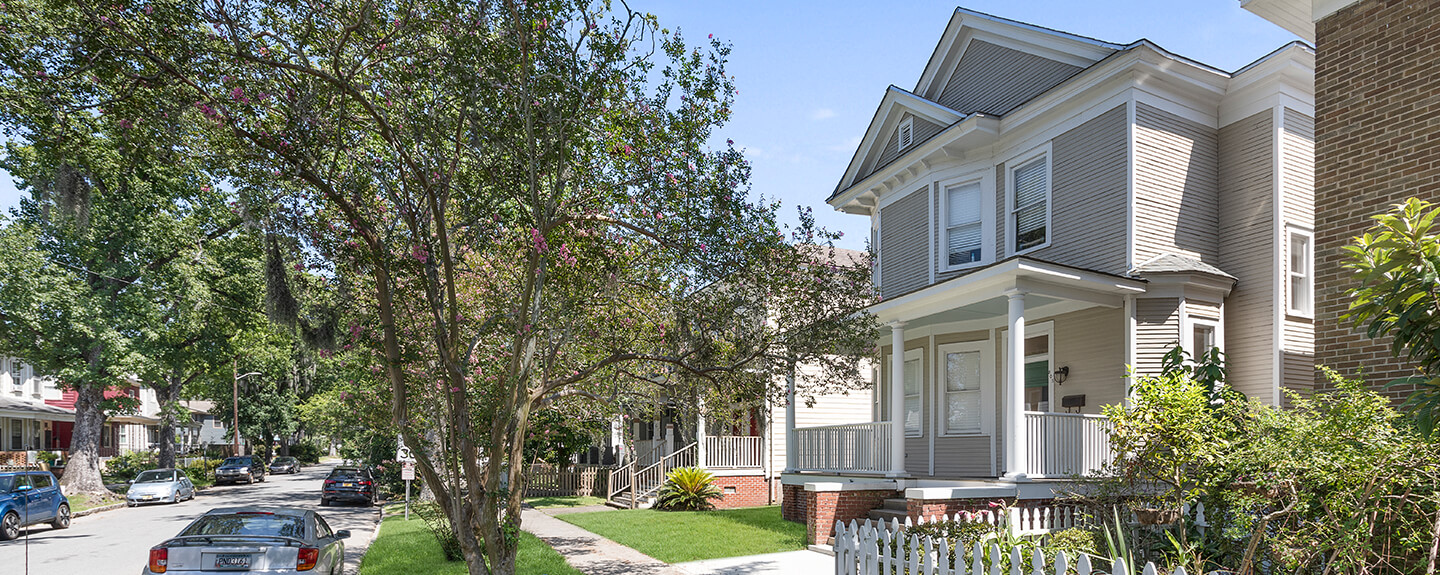
EASTSIDE DISTRICT
The Eastside Historic District offers a glimpse into early 20th-century suburban life in Savannah. Both the Eastside and Ben Van Clark neighborhoods feature handsome two-story homes with broad porches shaded by a lush mix of mature live oak and flowering azaleas. The smaller cottages and workmen rows that line this district’s eastern edge also support the strong residential character. Together with wide streets and rhythmic front lawns, Eastside district says, “welcome home.”

“Neighborhoods feature handsome two-story homes with broad porches shaded by a lush mix of mature live oak and flowering azaleas”
The structures in the Eastside neighborhood reflect architectural styles and building types popular in Georgia during the late 19th and early 20th centuries. The earliest houses were built in the Italianate and Queen Anne styles and feature picturesque rooflines, towers, and sawn details. The Snedaker House at East Park Avenue and Ott Street is one of the most exuberant houses with its onion domes, projecting bays and stained glass. C.V. Snedaker built his home c. 1894 in what was then the new Collinsville subdivision. Houses built in the Second Empire style, with their distinctive mansard roofs, line Collins Street along a wonderfully green park in Ben Van Clark neighborhood.
The Eastside Historic District is significant as a series of subdivisions developed by businessman Jacob S. Collins. Collins was one of the first to receive a franchise in 1890 to provide electric railway service in Savannah. Electric streetcar lines ran through the neighborhood, specifically in the center of Gwinnett and Bolton Streets, and extended from city market and the river through a rural landscape of fields east to Thunderbolt. The powerhouse and storage yard for the streetcars was built on Gwinnett between Harmon and Ott Streets and continues to serve as the bus yard for Savannah-Chatham Area Transit Authority.
The Eastside District includes two middle-class streetcar developments: Collinsville, c. 1890s and the Meadows, a more upscale subdivision to the east of Collinsville. Waters Avenue separates the two developments and marks the northern boundary of the Meadows. Early brochures exhibited the first mansion homes built on Henry Street by John Screven, Jr., manager of Savannah Rice Mill Company, Joseph Copps with Southern Bank and Charles Gibbes, a local real estate investor. These two-story Queen-Anne homes featured towers and wrap-around porches as well as wood picket fences to keep the roaming livestock out of the area farm lots. Other surviving homes that made up The Meadows still stand in the 1100 and 1200 blocks of Park Avenue, Duffy, Henry and Anderson Streets. Collinsville and the Meadows became two of Savannah’s more prestigious developments before the completion of the Ardsley Park and Chatham Crescent suburbs of the 1920s.
Collinsville and The Meadows stood in the middle of the industrial and commercial areas and working class neighborhoods located around the railroad complex at East Broad and Wheaton Streets. The large rail yard and storage complex to the northeast were established here as early as 1847. Historic commercial and industrial buildings contributing to the Eastside district are the former Atlantic Coastline Railroad Road office building, built in 1926 in the Beaux Arts style. Other commercial and institutional landmarks, dating from 1907 through 1950, reflect vernacular, revivalist and contemporary styles. Ramona Riley School, built in 1907 and designed by J. DeBruyn Kops, and the Asbury Memorial Methodist Church, built in 1922, are two excellent examples of Gothic Revival architecture. Fire Station Number 7 on Gwinnett and Paulsen Streets, built in 1908, is a Romanesque Revival-style building designed by Hyman Witcover, architect of the Savannah City Hall.
The Colonial Revival style, popular from the 1890s to the 1930s, is the most dominant style in the Eastside Historic District with eighty-two examples found here. 1002 East Henry stands as a beautiful example of symmetry and simplicity for which the Colonial Revival is known. The house was completed in 1909 for Robert Frank Cassels, treasurer of the Cassels Feed & Grain Company. It also was home to former Savannah Mayor J. C. Lewis. After years of vacancy, the house and its carriage house have been painstakingly rehabilitated. Examples of modest homes in the Colonial Revival style can be found in the 700 and 800 blocks of Duffy Street and Park Avenue. These homes were built by smaller development companies that bought into Collin’s vision for a residential suburb for Savannah’s middle-class.
Today, the Meadows is known as the Benjamin Van Clark neighborhood. Benjamin Van Clark served as a youth leader of the Chatham County Crusade for Voters from 1963 to the mid- 1960s. He went on to become a field director for Dr. Martin Luther King’s Southern Christian Leadership Conference. The large public park at Live Oak Street and Park Avenue was renamed in his honor in 1980.
Eastside is also home to a collection of vernacular structures that include railroad houses, pyramid cottages, Georgian cottages, and one- and two-story duplexes. These resources stand at the district’s western end near the railroad tracks at East Broad Street. More such housing rests north of Collins Street in Ben Van Clark neighborhood. This area was known as “Eastland” according to the Savannah city directory dated 1898 and housed many domestic workers who serviced homes in both Collinsville and the Meadows.
